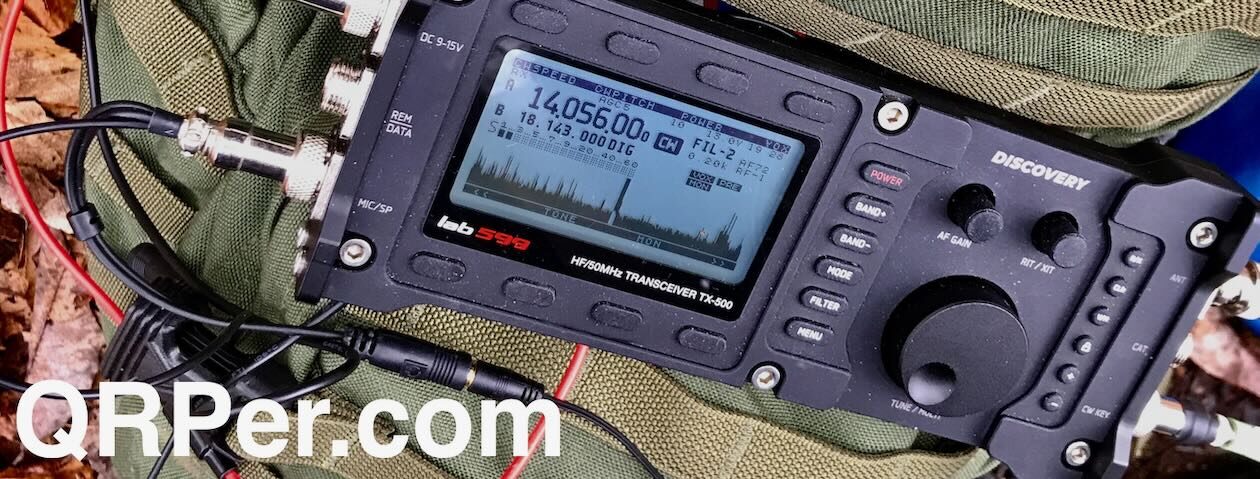I was speaking with my buddy Joshua (N5FY) in mid September. He’d recently acquired an Elecraft KX1 and the topic came up about pairing the KX1 with the AX1 antenna. I realized that in all of my experimenting with the AX1, I’d never paired those two. What!?!
Time to fix that!
On Thursday, September 28, 2023, I had a nice midday window to play radio. After dropping my daughters off at their classes, I stopped by the French Broad Food Co-op and grabbed a container of their chicken noodle soup from the refrigerator section.
I then made my way up the Blue Ridge Parkway (K-3378) to the Craggy Gardens Picnic Area at Bearpin Gap–one of my favorite spots on the BRP.
 Despite stunning weather and the beginnings of fall foliage, the parking lot was pretty empty. After all, it was a Thursday and a good week or two before leaf-lookers descend upon western North Carolina.
Despite stunning weather and the beginnings of fall foliage, the parking lot was pretty empty. After all, it was a Thursday and a good week or two before leaf-lookers descend upon western North Carolina.
I pretty much had the picnic area to myself (there was one other person there). I picked a picnic table at the top of the hill under the trees.
Mahlzeit!
 When my wife and I lived and worked in Munich, the salutation I learned before any other was “Mahlzeit!” At Siemens, I remember walking through the hallways and people I’d never met before exclaimed “Mahlzeit!” as I passed by.
When my wife and I lived and worked in Munich, the salutation I learned before any other was “Mahlzeit!” At Siemens, I remember walking through the hallways and people I’d never met before exclaimed “Mahlzeit!” as I passed by.
I quickly learned that Mahlzeit essentially meant “Lunch Time!” and I still say it today to my family when I’m about to make or grab some lunch. Funny how these things stick with you.
Now where was I–? Oh yes…
First thing I did at Craggy was set up my stove to start heating the soup. I show this in my activation video below.
If interested, here are the components of my stove kit:
- Snow Peak Giga Power 2.0 Stove
- Snow Peak GigaPower 110 Gold Fuel Canister – 110g
- TOAKS 750ml pot
- Lite My Fire Titanium Spork
Quick continuity check!
 Next, it dawned on me that I would need to attach the AX1 counterpoise to the KX1. I didn’t bring one of my copper clamps to attach to the outside of the AX1’s BNC connector, so I needed to find another grounding point on the KX1.
Next, it dawned on me that I would need to attach the AX1 counterpoise to the KX1. I didn’t bring one of my copper clamps to attach to the outside of the AX1’s BNC connector, so I needed to find another grounding point on the KX1.
I then remembered that the KX1 has two thumb screws on the bottom of the radio. Knowing Elecraft, I assumed that these screws could be used as an attachment point for a counterpoise, but I wanted to confirm that the screw itself had a direct connection to ground.
Fortunately, I keep a small multimeter in my supplemental gear bag in my car. It’s an inexpensive Allosun Pocket Multimeter. I use it for things like this: testing.
I set the multimeter to read continuity and then placed one probe on the outside of the KX1’s female BNC and the other on one of the thumb screws. Sure enough, there was a direct connection to ground. I didn’t need to worry about the KX1 chassis paint insulating the connection to ground because the thumb screw had a direct connection. Perfect! Continue reading Amazing POTA Fun: Pairing the Elecraft KX1 and AX1…but first, a little lunch!





















































